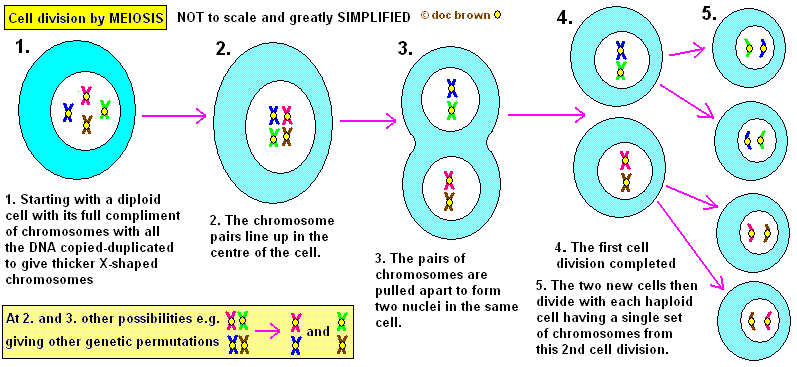Do Bacteria Cells Have a Nucleus?

Bacteria, the microscopic single-celled organisms that are ubiquitous in our environment, have long been a subject of fascination and study for scientists. One of the fundamental questions that often arises is whether these tiny life forms possess a nucleus, a structure essential for cellular organization and function in more complex organisms. In this article, we delve into the world of bacterial cells to uncover the truth behind their cellular architecture.
Bacteria are ancient organisms that have evolved a unique cellular structure, significantly different from that of eukaryotic cells found in plants, animals, and fungi.
Let’s explore the intricate details of bacterial cells and their intriguing differences from other cellular life forms.
The Structural Differences in Bacterial Cells

Bacterial cells, unlike eukaryotic cells, do not contain a defined nucleus surrounded by a nuclear membrane. Instead, their genetic material, which consists of a single circular DNA molecule, is located in a region called the nucleoid. The nucleoid is not a membrane-bound structure but rather a distinct area within the bacterial cell where the DNA is tightly packed. This organization allows for efficient gene expression and regulation.
Advantages of Bacterial Cell Structure
- Rapid replication: The absence of a nucleus enables bacteria to replicate their DNA and divide quickly, contributing to their remarkable adaptability and survival in diverse environments.
- Simplicity: The bacterial cell's straightforward structure, without the complexity of a nucleus, allows for efficient energy utilization and resource allocation.
Potential Drawbacks
- Limited gene expression control: The lack of a nucleus may restrict the precision of gene regulation, potentially impacting bacterial response to environmental changes.
- Susceptibility to DNA damage: Without a protective membrane, bacterial DNA is more vulnerable to external factors, which could lead to genetic mutations.
Evolutionary Perspective on Bacterial Nucleoids

The absence of a nucleus in bacteria is a testament to their ancient origins and the unique path they have taken in evolution. While eukaryotic cells, with their membrane-bound nuclei, are believed to have evolved from prokaryotic ancestors like bacteria, the latter have retained their distinct cellular architecture.
Evolutionary Steps Towards a Nucleus
- Prokaryotic cells, like bacteria, are considered the earliest forms of life, characterized by the absence of membrane-bound organelles.
- Over time, certain prokaryotes evolved into more complex eukaryotic cells, developing membrane-bound nuclei and other organelles.
- This evolutionary transition is thought to have provided eukaryotic cells with enhanced capabilities for gene expression and cellular organization.
- Bacteria, however, have remained steadfast in their simpler structure, an adaptation that has served them well in their ecological niches.
Implications for Bacterial Adaptation and Survival
The absence of a nucleus in bacterial cells has significant implications for their ability to adapt and survive in various environments.
"Bacteria's success as one of the most abundant life forms on Earth is a testament to their unique cellular architecture and the strategies they've evolved."
Dr. Emily Wright, Microbiologist
Rapid Response to Environmental Changes
Without the need to regulate gene expression through a complex nuclear structure, bacteria can quickly respond to environmental stimuli, such as changes in nutrient availability or temperature. This rapid adaptability is a key factor in their widespread distribution and survival.
Genetic Flexibility and Horizontal Gene Transfer
The bacterial nucleoid, though not membrane-bound, allows for efficient gene transfer and exchange between different bacterial species. This horizontal gene transfer mechanism contributes to their genetic diversity and the rapid evolution of antibiotic resistance, for example.
Future Research and Potential Applications
The unique structure of bacterial cells, particularly their nucleoid region, presents exciting opportunities for future research and potential applications:
- Developing novel antibiotics: Understanding the intricacies of bacterial DNA packaging and regulation could lead to the discovery of new antibiotic targets.
- Synthetic biology: The simplicity of bacterial cells makes them ideal candidates for engineering novel biological systems with specific functions.
- Environmental remediation: Bacterial cells' ability to adapt and survive in extreme conditions can be harnessed for developing effective bioremediation strategies.
Conclusion

In the intricate world of cellular biology, bacteria stand out with their distinct cellular architecture. The absence of a nucleus, while contrasting sharply with more complex organisms, is a testament to their ancient origins and unique evolutionary path. As we continue to unravel the mysteries of bacterial cells, their structural differences and adaptations offer valuable insights into the diversity and resilience of life on our planet.
The study of bacterial cells, with their intriguing nucleoid structure, provides a fascinating window into the evolutionary processes that have shaped life's diversity.
Are all bacteria structurally similar?
+No, bacteria exhibit a remarkable diversity in their structural features. While they all lack a nucleus, they differ in size, shape, and the presence of other specialized structures like flagella and pili.
How does the bacterial nucleoid function without a nuclear membrane?
+The bacterial nucleoid relies on a unique combination of DNA-binding proteins and the cell’s internal structure to maintain DNA organization and regulate gene expression.
Can bacteria evolve to develop a nucleus-like structure?
+While evolution is a continuous process, the development of a nucleus-like structure in bacteria is highly unlikely due to the significant advantages their current structure offers in terms of rapid replication and adaptation.
What are the main differences between bacterial and eukaryotic cells?
+Bacterial cells are prokaryotic, meaning they lack membrane-bound organelles like a nucleus, while eukaryotic cells are more complex, containing various organelles and a membrane-bound nucleus.


